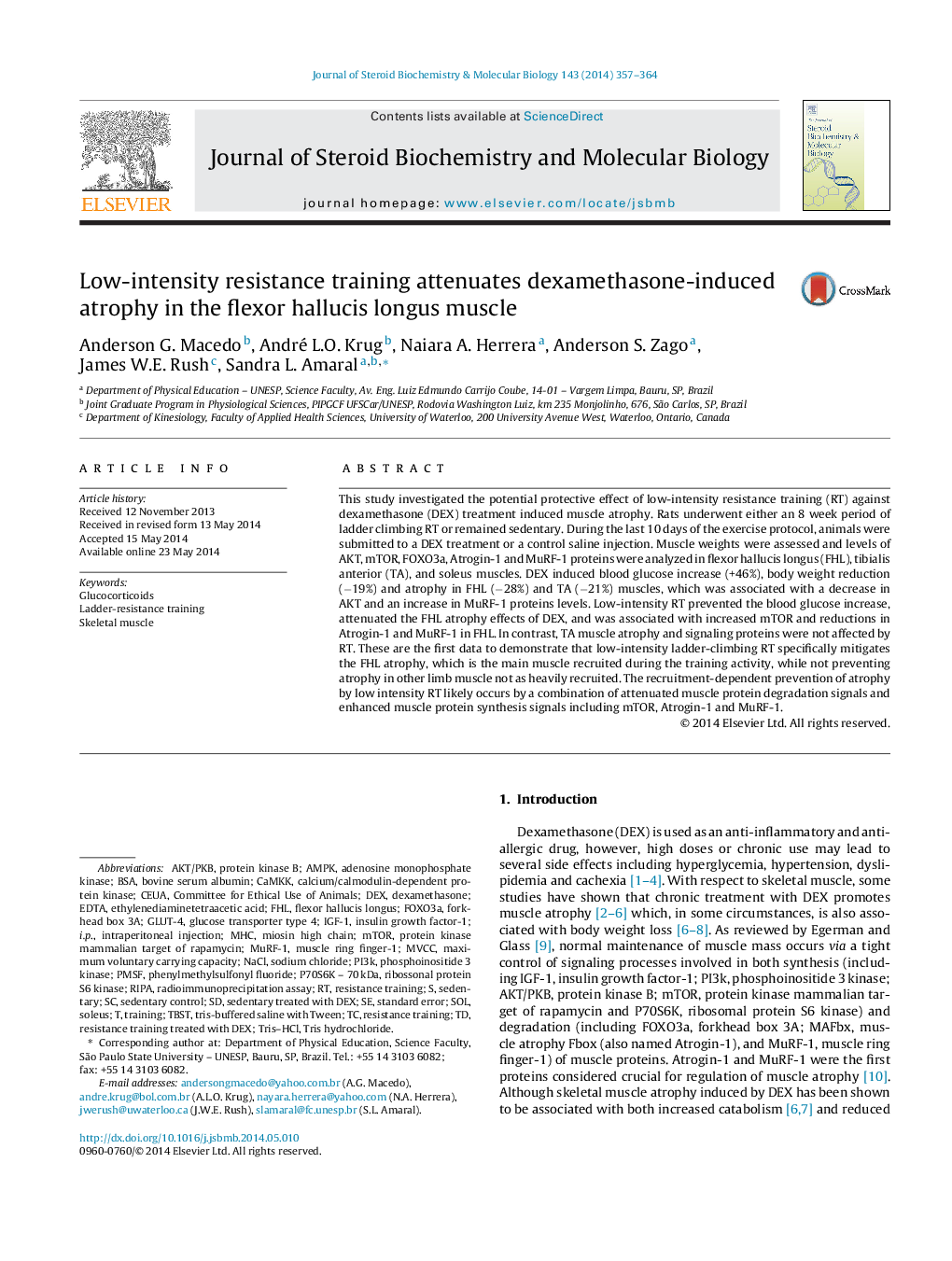| Article ID | Journal | Published Year | Pages | File Type |
|---|---|---|---|---|
| 8338771 | The Journal of Steroid Biochemistry and Molecular Biology | 2014 | 8 Pages |
Abstract
This study investigated the potential protective effect of low-intensity resistance training (RT) against dexamethasone (DEX) treatment induced muscle atrophy. Rats underwent either an 8 week period of ladder climbing RT or remained sedentary. During the last 10 days of the exercise protocol, animals were submitted to a DEX treatment or a control saline injection. Muscle weights were assessed and levels of AKT, mTOR, FOXO3a, Atrogin-1 and MuRF-1 proteins were analyzed in flexor hallucis longus (FHL), tibialis anterior (TA), and soleus muscles. DEX induced blood glucose increase (+46%), body weight reduction (â19%) and atrophy in FHL (â28%) and TA (â21%) muscles, which was associated with a decrease in AKT and an increase in MuRF-1 proteins levels. Low-intensity RT prevented the blood glucose increase, attenuated the FHL atrophy effects of DEX, and was associated with increased mTOR and reductions in Atrogin-1 and MuRF-1 in FHL. In contrast, TA muscle atrophy and signaling proteins were not affected by RT. These are the first data to demonstrate that low-intensity ladder-climbing RT specifically mitigates the FHL atrophy, which is the main muscle recruited during the training activity, while not preventing atrophy in other limb muscle not as heavily recruited. The recruitment-dependent prevention of atrophy by low intensity RT likely occurs by a combination of attenuated muscle protein degradation signals and enhanced muscle protein synthesis signals including mTOR, Atrogin-1 and MuRF-1.
Keywords
AMPKsedentary controlTRIS-buffered saline with TweenMuscle RING finger-1CEUAFHLMuRF-1CaMKKTBSTRIPAFOXO3aIGF-1PMSFi.p.mTORDEXPI3KNaClBSAadenosine monophosphate kinasebovine serum albuminTrainingResistance trainingAkt/PKBEDTAEthylenediaminetetraacetic acidTris–HClintraperitoneal injectionstandard errorDexamethasoneSodium chlorideSolradioimmunoprecipitation assaySoleusInsulin growth factor-1Skeletal musclephosphoinositide 3 kinasephenylmethylsulfonyl fluorideMHCSedentaryGlucose transporter type 4Flexor hallucis longusTris hydrochlorideprotein kinase Bcalcium/calmodulin-dependent protein kinaseGlut-4Glucocorticoids
Related Topics
Life Sciences
Biochemistry, Genetics and Molecular Biology
Biochemistry
Authors
Anderson G. Macedo, André L.O. Krug, Naiara A. Herrera, Anderson S. Zago, James W.E. Rush, Sandra L. Amaral,
